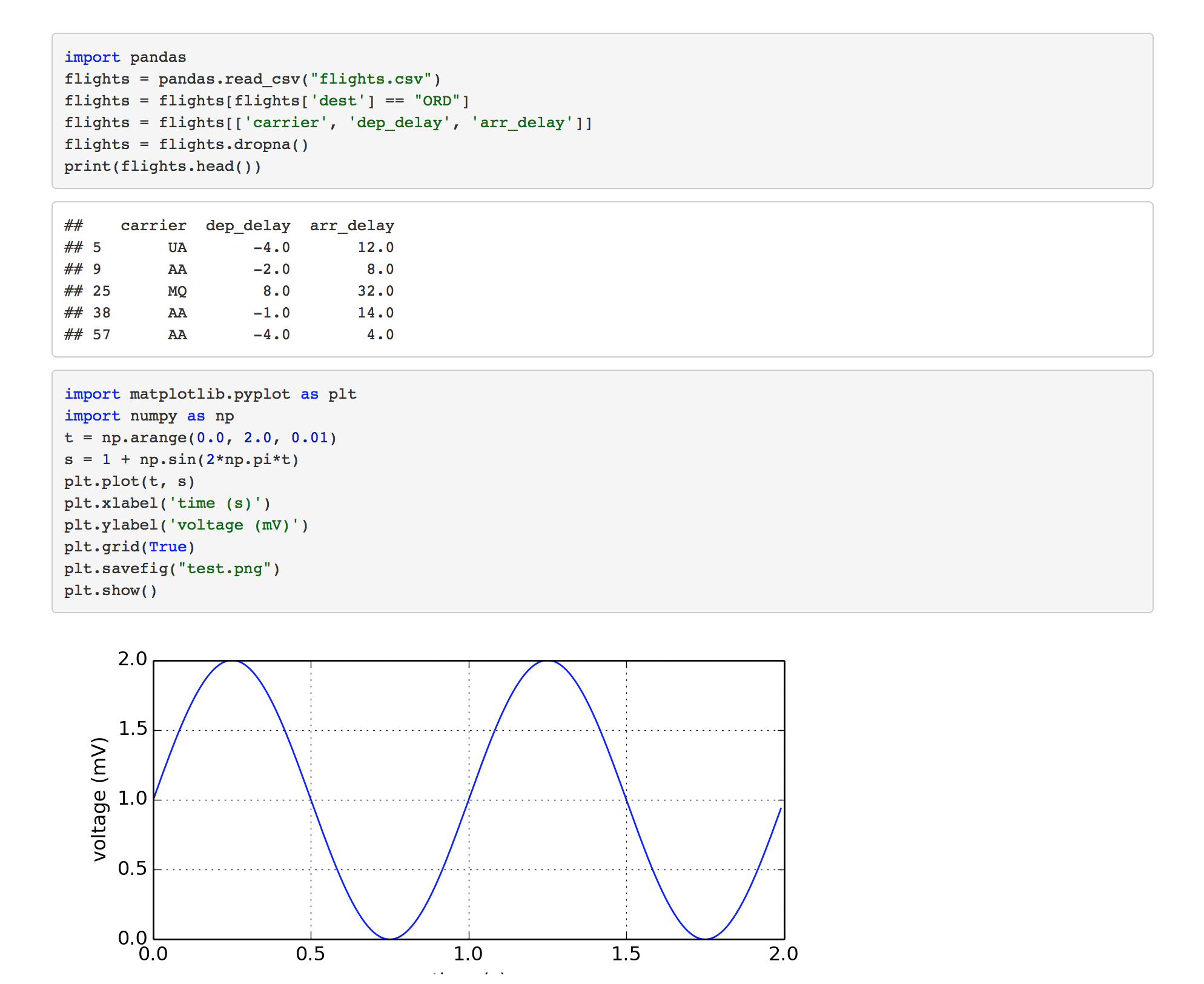.typically use plain text markup formats such as reStructuredText (reST, the markup used for writing the official Python documentation) or Markdown. The Python support in R Markdown and knitr is based on the reticulate package (Ushey, Allaire, and Tang 2020), and one important feature of this package is that it allows two-way communication between Python and R. For example, you may access or create Python variables from the R session via the object py in reticulate. Develop, collaborate, manage and share your data science work in R and Python-all with RStudio.
Do you love working with Python, but just can’t get enough of ggplot, R Markdown or any other tidyverse packages. You are not alone, many love both R and Python and use them all the time. Now RStudio, has made reticulate package that offers awesome set of tools for interoperability between Python and R.
One of the biggest highlights is now you can call Python from R Markdown and mix with other R code chunks. And yes you can load the data with Pandas in Python and use the pandas dataframe with ggplot to make cool plots.

Running R with Python Code in R Markdown Documents An R markdown, or Rmd, is a text file containing text or commentary (combined with text formatting) and chunks of R code surrounded by ```. From a file, inside R or R Studio, you can create and render useful reports in output formats like HTML, pdf, or word. Python in R Markdown Using reticulate, one can use both python and R chunks within a same notebook, with full access to each other’s objects. Built in conversions for many Python object types is provided, including NumPy arrays and Pandas data frames.
Not just that, now you can source your python scripts, just like you have been sourcing your R scripts.
Reticulate has made it easy to translation between R and Python objects. For example, it is much easier to go from R dataframes to Pandas data frames, or R matrices to NumPy arrays).
One of the advantages of Python is the virtual environments, where you can different versions of Python and its packages separately. All you need to do is create a specific virtual environment for each version you want and use it virtual environment when you need. Reticulate allows you use specific virtual environment that you like.
Run Python In R Markdown
Learn more about reticulate package from
Here are some cool examples of getting started with reticulate to use R and Python from R Markdown
using #Python and #rstats in the same RMarkdown document is pretty awesome with the Reticulate Package. Objects from Python are accessible in R using the magic `py` object. Pretty amazing, imo. pic.twitter.com/iQPqWuJ4RN
— JD Long (@CMastication) March 28, 2018
Using Python In R Markdown
Related posts:
5.4 Control the size of plots/images
The size of plots made in R can be controlled by the chunk option fig.width and fig.height (in inches). Equivalently, you can use the fig.dim option to specify the width and height in a numeric vector of length 2, e.g., fig.dim = c(8, 6) means fig.width = 8 and fig.height = 6. These options set the physical size of plots, and you can choose to display a different size in the output using chunk options out.width and out.height, e.g., out.width = '50%'.
If a plot or an image is not generated from an R code chunk, you can include it in two ways:
How To Use Python In R Markdown
Use the Markdown syntax
. In this case, you can set the size of the image using thewidthand/orheightattributes, e.g.,Use the knitr function
knitr::include_graphics()in a code chunk. You can use chunk options such asout.widthandout.heightfor this chunk, e.g.,

What Is R Markdown
We used the width 50% in the above examples, which means half of the width of the image container (if the image is directly contained by a page instead of a child element of the page, that means half of the page width). If you know that you only want to generate the image for a specific output format, you can use a specific unit. For example, you may use 300px if the output format is HTML.
